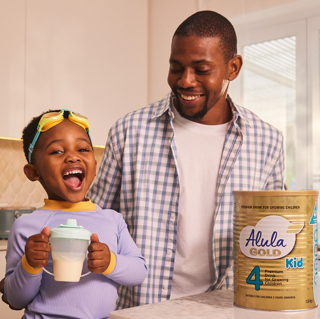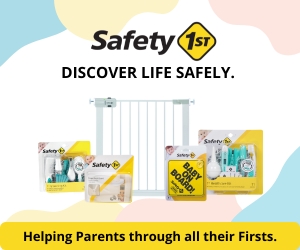
Muscle tone is the amount of tension (or resistance to movement) in muscles when they are at rest. Our muscle tone helps us to hold our bodies upright when we are sitting and standing. Changes in muscle tone are what enable us to move. Since tone only describes a muscle when it is inactive or resting, it is quite possible for a child with low tone to still be very strong when they exert themselves and activate their muscles. There’s a big difference between muscle tone and muscle strength.
Low muscle tone is used to describe muscles that are floppy, which is also known as hypotonia. Children with low muscle tone may need to put in more effort to get their muscles moving properly when they are doing an activity. They may also have difficulty maintaining good posture when sitting or standing. Many children with low muscle tone have delays in their gross motor development (e.g. rolling, sitting, and walking).
Signs and symptoms of low muscle tone:
If your child has low muscle tone, your child may:
- seem limp when you lift them.
- have increased flexibility in their joints.
- have poor posture.
- have poor reflexes.
- get tired easily because of the extra effort they have to put in to activate their muscles or maintain their posture.
- not have much strength in their muscles.
- slouch rather than sit up straight and be weak in the shoulders and upper arms.
- have delays in reaching gross motor milestones, such as rolling, sitting, crawling or walking.
- have delayed fine motor skills development, such as grabbing toys, moving objects between hands, etc.
How to improve muscle tone:
Muscle and core strengthening activities will increase your child’s level of alertness, muscle tone, and improve your child’s endurance. The core muscles are the muscles in the abdomen, back and pelvis and the key to strengthening these muscles is making these activities fun and exciting – like a game!
Play at home:
Here are some activities that you can do with your child at home to encourage overall improved strength, stability, and body awareness.
- Bounce on a mini trampoline.
- Squeeze and roll playdough.
- Fly like superman while lying on your stomach, and lift your arms and legs off of the ground.
- Swim on the ground by kicking your legs and swinging your arms.
- Run on the spot, stomp around, do star jumps, skip with a skipping rope.
- Animal walks: walk like a crab, bear, hop like a frog, kangaroo and bunny, you name it!
- Play Tug of war either sitting, standing or kneeling by using a dressing gown cord or twisted towel to make a rope.
- Play ball games: catching, throwing, bouncing, and aiming at targets. (Scrunch up sheets of newspaper into balls!)
- Play with bubbles: Have your child lay on their back. Blow bubbles above their legs and encourage them to lift their legs to pop the bubbles with their feet.
- Tong relay: pick up small toys or objects with a pair of tongs and run and place them in a container.
- Spray bottles: water plants or draw pictures by squirting water on concrete.
- Arm wrestles: sit opposite your child with elbows on the table. Hold each other’s hands and encourage your child to push against your resistance.
- Do wheelbarrow walks: adapt by holding your child at their hips, thighs, or knees if holding them at their ankles is too difficult.
Extra-mural activities:
Research suggests that the best core strengthening extra-mural activities are:
- Swimming: in order to move around in water, almost every muscle in the body must work, thus encouraging strength building.
- Gymnastics orientated programmes (such as Catrobatkidz): gymnastics encourages muscle strengthening, endurance building, postural control, coordination, and balance. Your child will learn to perform forward rolls, which encourages abdominal activation. Walking on a balance beam requires postural control, support of the trunk, and narrowing of their base of support to challenge their balance. Time spent on a trampoline will facilitate leg strengthening and assist with achieving jumping. On bars, children will be encouraged to support their body weight through their arms, activating the shoulder girdle, pectoral muscles, and abdominal muscles. Gymnastics also encourages body awareness so that a child can become more mindful of where their body is at in space.
If left untreated the child with low muscle tone may have difficulties with:
- learning to talk, speech clarity and delayed speech.
- managing a full school day due to poor strength and endurance.
- participating in sporting activities leading to an inactive lifestyle, increasing the risks of other health related issues such as obesity, diabetes, cardiovascular disease or similar conditions.
- self-esteem and confidence when they realise their skills do not match their peers.
- bullying when others become more aware of a child’s difficulties.
- fine motor skills (e.g. writing, drawing and cutting) due to poor core stability, meaning they do not have a strong base to support the use of their arms and hands.
- completing self-care tasks (e.g. doing up shoelaces, buttons, zips, and using cutlery).
- anxiety and stress in a variety of situations leading to difficulty reaching their academic potential.
In conclusion:
Schools are noticing that more and more children have low muscle tone. In some cases there may be an underlying medical cause, or it may be the way children grow up these days with technology, or maybe just born with low muscle tone. Some cases are mild, some are severe, but whatever the cause or severity, with some extra help and effort from a young age, the child can strengthen the muscles to compensate and live a normal healthy life.















Thank you for this informative post. I didn’t know this condition existed. Muscle growth is so essential at this delicate age. Glad you provided examples on how it can be recognized and actions that will help in getting rid of it.